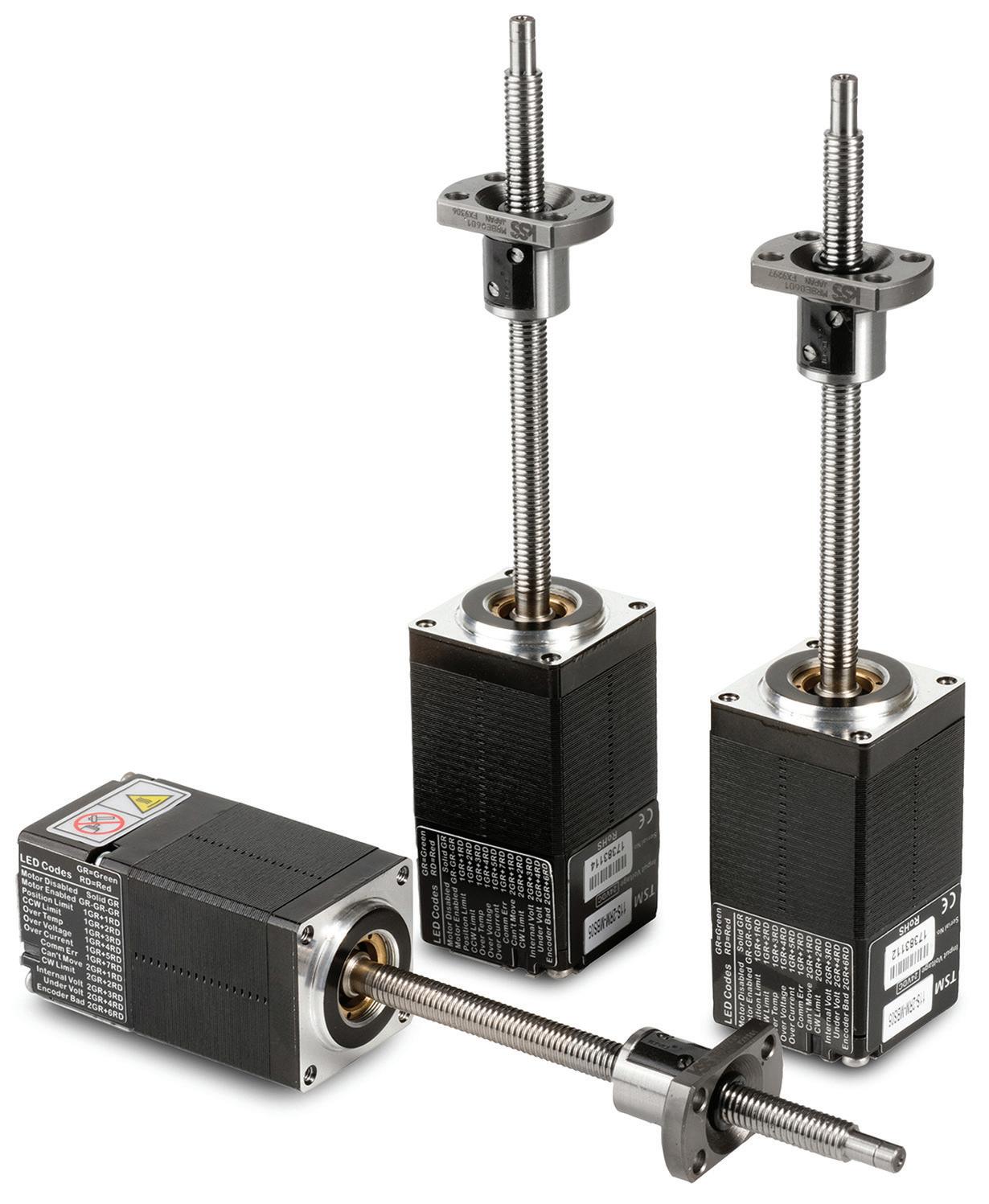
3 minute read
What constitutes a high-speed actuator
Like many terms used in the linear motion industry— including heavy duty, miniature, and corrosion-resistant — there is no industry standard that specifies what constitutes a high-speed linear actuator. Nevertheless, there are some general guidelines that manufacturers follow when classifying and marketing their actuators as high speed. These guidelines are typically based on the drive mechanism,actuator type, and even primary use or industry. Understanding these distinctions can help you make an informed decision when your application calls for a high-speed linear actuator.
Speed is primarily dependent on the linear drive mechanism: The limiting factor of a linear actuator’s speed capability is typically the drive mechanism. More specifically, ballscrews and leadscrews are limited in speed by their tendency to whip like a jump rope — which is a function of the screw diameter, length, and end bearing arrangement.
Because leadscrew designs are based on sliding contact and generate high heat due to friction, they often have lower maximum speeds than ballscrews of a similar size. So of the screw technologies, actuators based on ballscrew drives are more likely to be deemed high speed than those based on leadscrew drives.

Applied Motion Products TBSM11 closed-loop linear actuators give axes faster acceleration and shorter move times for more throughput than traditional stepper-motor linear actuators. With peak torques to 50% of holding torque, these linear actuators excel on designs that need axes to start and stop loads quickly.
Actuators based on belt drives or rack and pinion assemblies are typically able to reach higher speeds than ballscrews, provided they are properly tensioned (for belt drive versions) or preloaded (for rack and pinion versions). Actuators with steel reinforced belts can deliver speeds of 10 m/sec or higher while rack and pinion driven actuators can commonly reach speeds to 5 m/sec.
Actuator type influences maximum speed: Another factor comes into play when discussing high speed linear actuators is the type of actuator. The high speed designation is most often applied to thrust-rod type actuators (also called electric cylinders) because their primary applications involve pushing-pulling and inserting operations, which typically require very short extension and retraction times. These actuators can be either ballscrew or leadscrew driven ... with speeds ranging from 0.1 m/sec to more than 1 m/sec.
A few manufacturers even offer belt-driven rod-style actuators that can reach speeds to 2.5 m/sec. Slider or carriage-type actuators (also called rodless actuators) can achieve even higher speeds than rodtype actuators in many cases. But because their primary uses are for positioning and transport (typically with high loads as well) they are less often marketed as high speed. Rodless slider-type actuators have a wide range of drive options ... including leadscrew, ballscrew, rack and pinion, belt, and linear motor.
Guide type limits top speed: Linear motors inherently provide the highest speed capabilities, with no mechanical parts to limit speed or create friction and heat. But when incorporated into a linear actuator, linear motor drives are limited by the speed of the guide mechanism. Similarly, steel-reinforced belt drives for linear actuation can deliver speeds exceeding 12 m/sec. However, like linear motors, they are limited by the maximum speed of the guide.
The most common guide systems used with linear motors and belt drives are recirculating profiled rail bearings for which maximum speeds typically reach up to 5 m/sec — limiting the overall speed of the actuator to 5 m/sec or less.
Track-roller (wheel) linear guide mechanisms for still higher speeds: Faster stokes are possible when belt drives (and in some cases, linearmotor drives) are paired with wheel guides instead of recirculating profiled-rail bearings. High-speed linear actuators with a preloaded linearguide wheel assembly and a properly tensioned steel-reinforced belt drive win the race with travel speeds to 10 m/sec. Standard guide-wheel systems can reach speeds to 8 m/sec.
Side note on miniature designs: For micro and nano-positioning applications, the actuators of choice are often based on voice coil or piezo technologies. Ultrasonic piezo actuators can reach speeds of 0.5 m/sec or greater, but they typically have maximum strokes of 100 mm or less. Voice-coil actuators operate at maximum speeds of 0.25 to 0.30 m/sec with strokes of 150 mm or less.
While these specifications may not fit the general definition of highspeed linear actuators, considering the rapid acceleration that is required to reach these speeds in very short stroke lengths, piezo and voice coil designs can easily be classified as high acceleration actuators.










